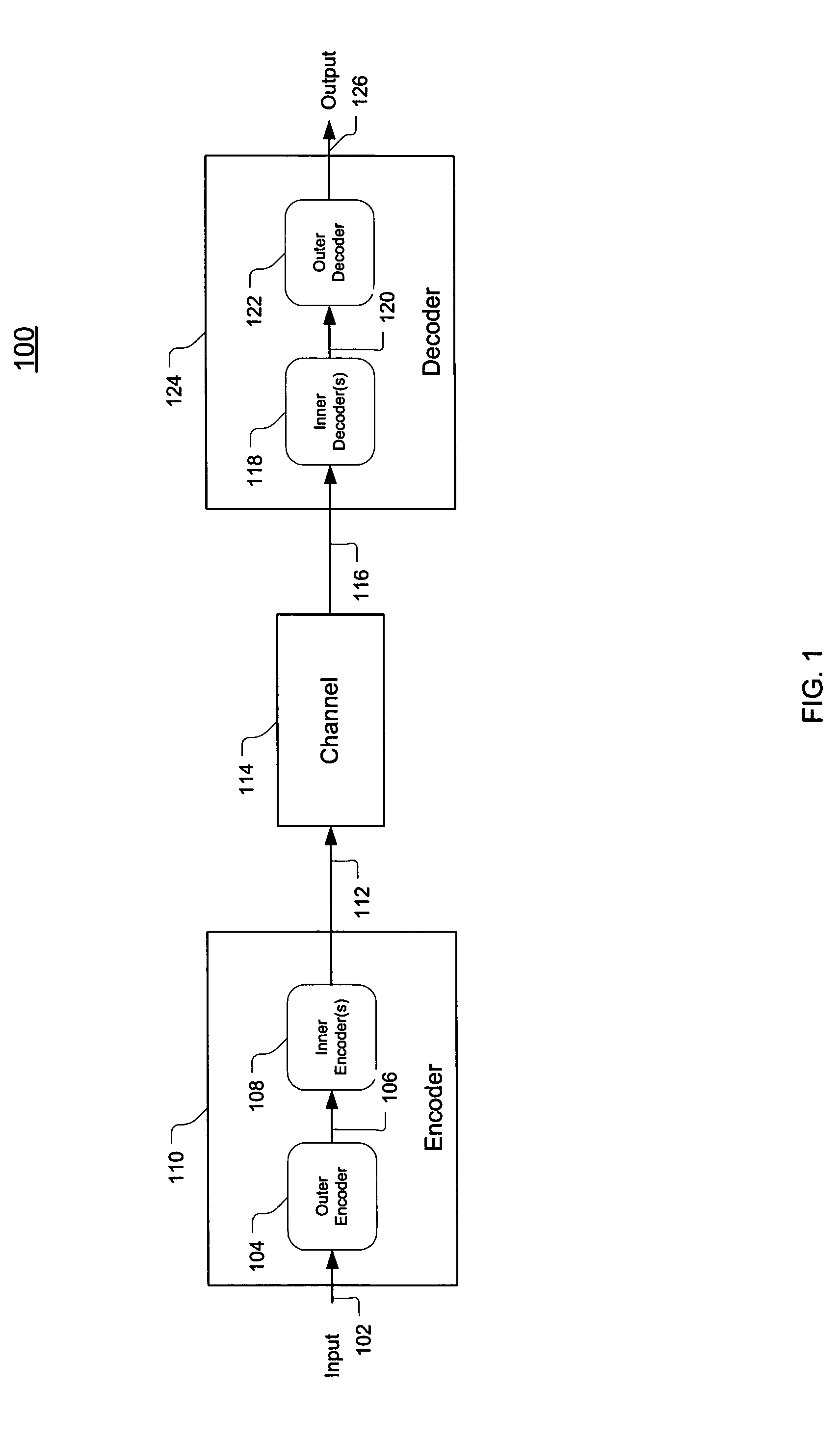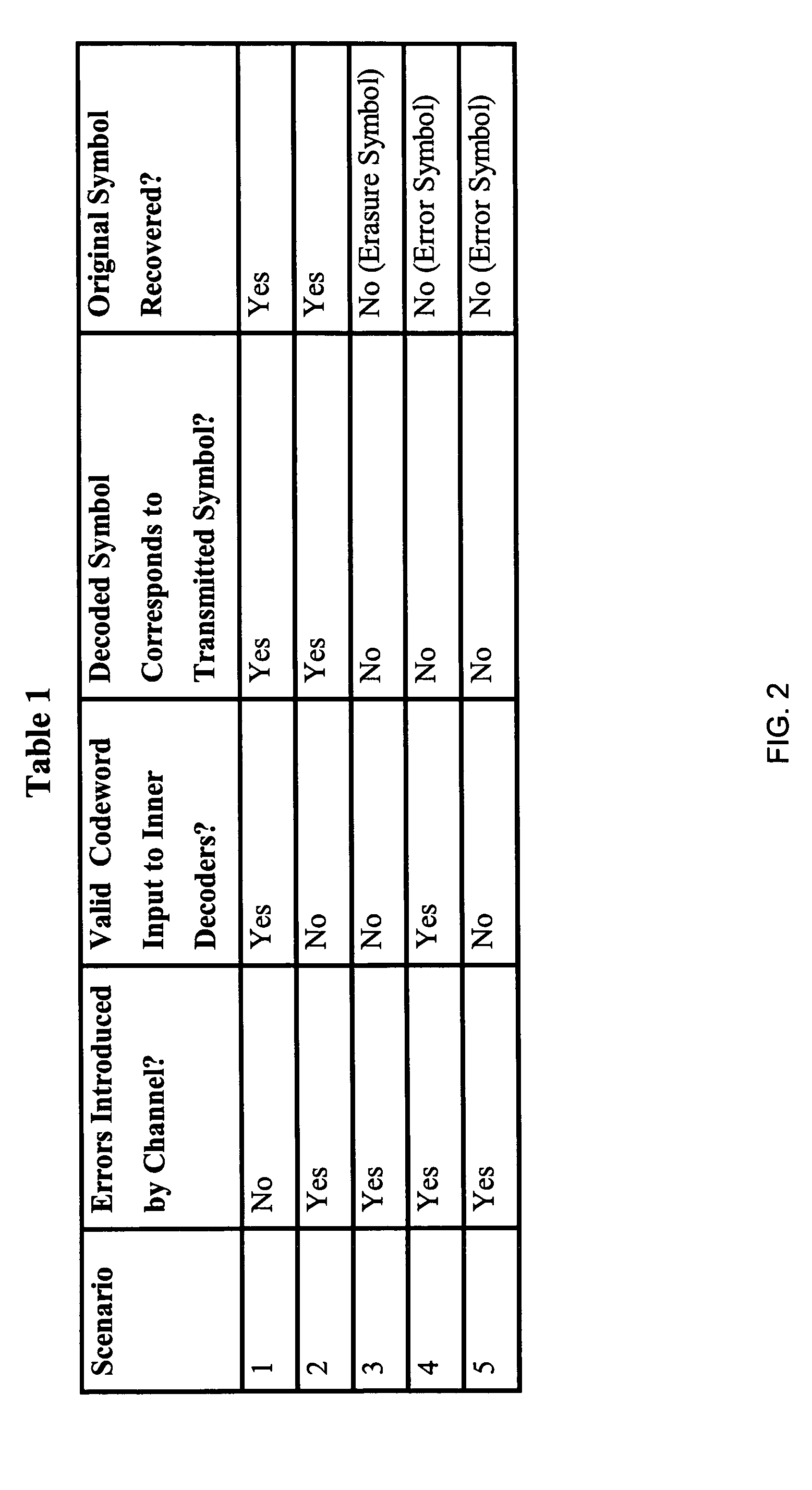Concatenated iterative and algebraic coding
a technology of concatenation and error correction, applied in the field of errorcorrection (ec) coding, can solve the problems of algebraic decoders, iterative decoders may fail to correct all errors in a reasonable number of iterations, and the simulation of decoders is impractical using today's computing systems, so as to reduce errors
- Summary
- Abstract
- Description
- Claims
- Application Information
AI Technical Summary
Benefits of technology
Problems solved by technology
Method used
Image
Examples
exemplary embodiment 300
[0031]FIG. 3 illustrates exemplary embodiment 300 of encoder 110 of FIG. 1, comprising (outer) array encoder 304 operatively coupled to (inner) LDPC encoder 308. In operation, array encoder 304 receives input data 302 to be transmitted or stored, encodes the input data to produce array-encoded data 306, and then passes the array-encoded data to LDPC encoder 308. LDPC encoder 308 then encodes the array-encoded data to produce LDPC / array-encoded data 310.
[0032]FIG. 4 illustrates additional details associated with the operation of encoder 300 of FIG. 3. Input data to be encoded by encoder 300 is first grouped into p row by (q−r) column blocks 302 where each block entry is a single bit of input data, p, q, and r are positive integers, and 0302 can thus be considered a data block with (q−r) data symbols 312. The operation of array encoder 304 results in (p×q) block 306, which includes the original (q−r) symbols 312 as well as r code (in this case, parity) symbols 316. The resulting (p×q)...
exemplary embodiment 500
[0042]FIG. 5 illustrates exemplary embodiment 500 of decoder 124 of FIG. 1, which includes SISO channel detector 502, iterative LDPC decoder 504, and algebraic array decoder 506. In operation, channel detector 502 receives EC-encoded data from the channel, produces soft estimates of the data, divides the estimates into blocks of q columns and (p+h) rows, and delivers the estimates to LDPC decoder 504.
[0043]The LDPC decoder iteratively decodes each column, independently of the others, and flags a column as an erasure symbol to algebraic array decoder 506 if LDPC decoder 504 fails to converge to a valid codeword after a specified maximum number of iterations.
[0044]Note that, the inner, LDPC decoder(s) can, in various implementations, process each column in series or in parallel as is most appropriate for the implementation. Generally, a parallel-implementation option can speed up the operation of the inner decoder(s) relative to a serial implementation.
[0045]As discussed earlier, an a...
PUM
 Login to View More
Login to View More Abstract
Description
Claims
Application Information
 Login to View More
Login to View More - R&D
- Intellectual Property
- Life Sciences
- Materials
- Tech Scout
- Unparalleled Data Quality
- Higher Quality Content
- 60% Fewer Hallucinations
Browse by: Latest US Patents, China's latest patents, Technical Efficacy Thesaurus, Application Domain, Technology Topic, Popular Technical Reports.
© 2025 PatSnap. All rights reserved.Legal|Privacy policy|Modern Slavery Act Transparency Statement|Sitemap|About US| Contact US: help@patsnap.com



